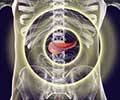Pattern recognition
Patterns of fever
a) Severity
b) Periodicity
Fever types can be classified as:
Continuous fever: The fever does not fluctuate more than 1° C in 24 hours. Remittent fever : The daily fluctuations exceed 2degree C. Intermittent fever: The fever persists only for several hours a day. When it occurs daily it is called Quotidian; on alternate days: Tertian; once in three days: Quartan fever. A Relapsing fever pattern is seen with Borrelia, rat bite fever, there is fever for 3 to 6 days followed by a fever free interval of one week and then fever once again. Intermittent fever also occurs with antipyretic therapy and cooling measures, hence this is of little help in discriminating, the varied etiologic factors resulting in the febrile episode.
c) Chills and rigors
A Chill is a subjective (feeling cold) voluntary phenomenon representing adaptation of the body to conserve heat (uncommon in infants). A Rigor is an involuntary muscle contractions (shivering) to generate heat. It occurs in conditions like malaria, filaria, deep seated abscesses, bacterial endocarditis etc.
d) Inter febrile clinical state
A careful observation of the patients between two febrile paroxysms is a useful guide to arrive at the etiology of the fever.
A child who continues to be toxic, lethargic, apathetic even when the temperature reaches normal may have more severe infection usually bacterial. In contrast, a child whose inter-febrile state is that of well being and who is not toxic and resumes his normal level of activity when the temperature is normal could have a more benign cause or a parasitic infestation like malaria.
e) Core temperature mismatch
The temperature difference between the core and the peripheral temperature is particularly important in the diagnosis and management of :
Sepsis Peripheral circulatory failure Hypothyroidism Malnutrition Febrile seizures Moribund child f) Relationship between core temperature and other vital signs:
For every degree Fahrenheit (above 100º F) rise in the body temperature the heart rate rises by 10/min. A dissociation between the temperature and pulse rate is seen in cases of typhoid, psittacosis, brucellosis, legionnaire's disease, described as relative bradycardia.
Fever is also accompanied by an increase in the systolic blood pressure and a wide pulse pressure.
The respiratory rate also increases with increase in the body temperature (3.8 for every 1 degree F).
Factitious fever is accompanied by low pulse rate and normal respiratory rate.
g) Drugs and fever patterns
Drugs can induce fever and alternatively, antipyretics(APS) and analgesics can disrupt the patterns of fever.
h) Fever related nonspecific symptoms
Symptoms and signs accompanying fever might not always indicate a particular system involvement.
These fever related symptoms include flushing, sweating, lethargy, apathy, anorexia, body-aches and behavioural responses like wearing cooler clothes and switching on the fan. However, fever related symptoms like vomiting and headache might indicate a more serious problem like intra cranial infection.
The pattern of fever can be understood under the following headings:





Comments
My son fever for 6 days and nearly finish 2 bottles of paracetamol, I'm so worried. Took blood test shown viral infection. Lost, what should I do instead of just continue giving medicine only from 3 bottles increase to 9 bottles now.
very educative
My 2 year old son exoeriences periodic high fever spell associated with vomiting about every 3 weeks or so. His first episode was in Oct 2012. His doctor states it seemed like a bacterial infection but the symptoms would reoccur every 3 weeks, skipping the month of december and jan now resurfacing in february. Im worried that this seems to be happening in patterns. Could this be a sign of something more serious?
i dunno what to do my son is 6yrs and he has fever with headache,stomach ache,chest pain and frequent cold and barking cough on geting tests done his WBC and ESR is high and gastrin level is high have given a course of antibiotics but to no relief